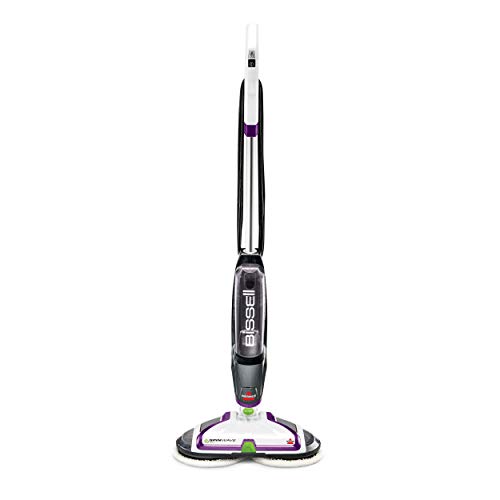How to Choose the Floor Buffers & Parts
Floor Buffers: A Comprehensive Guide To Choosing The Right One

- 1. Floor Buffers: A Comprehensive Guide To Choosing The Right One
- 1.1. Types of Floor Buffers
- 1.1.1. High-Speed Floor Buffers
- 1.1.2. Low-Speed Floor Buffers
- 1.1.3. Propane-Powered Buffers
- 1.2. Components of a Floor Buffer
- 1.3. Benefits of Using Floor Buffers
- 1.3.1. Enhanced Floor Appearance
- 1.3.2. Time and Labor Efficiency
- 1.3.3. Versatility
- 1.3.4. Economic Advantages
- 1.4. Choosing The Right Floor Buffer
- 1.4.1. Size Options
- 1.4.2. Speed Options
- 1.4.3. Rotary vs Orbital
- 1.4.4. Additional Features to Consider
- 1.5. Proper Usage Tips
- 1.6. Maintenance Tips
- 1.1. Types of Floor Buffers
Floor buffers, alternatively referred to as floor polishers or burnishers, play a crucial role in both commercial and residential cleaning. These sturdy devices are specifically crafted to elevate the aesthetic appeal of diverse flooring materials, such as hardwood or tile, through the meticulous processes of polishing and buffing, ultimately achieving a radiant finish. Within this in-depth guide, we will delve into the characteristics, advantages, and recommended methods linked to floor buffers, elucidating their significance in upholding immaculate and glossy floors.
Types of Floor Buffers
High-Speed Floor Buffers
- Purpose: High-speed floor buffers are designed to provide a glossy finish to the floor.
- Speed: They typically operate at speeds of 1,000 revolutions per minute (RPM) or higher.
- Application: Ideal for commercial spaces such as supermarkets, malls, and office buildings.
Low-Speed Floor Buffers
- Purpose: Low-speed buffers are more versatile, suitable for a variety of floor types and finishes.
- Speed: They operate at speeds ranging from 175 to 350 RPM.
- Application: Commonly used in residential settings and for polishing softer floor materials.
Propane-Powered Buffers
- Power Source: These buffers run on propane fuel, offering flexibility in terms of mobility.
- Application: Ideal for outdoor use and large areas where electric cords may be impractical.
Components of a Floor Buffer
- Motor: The motor is the powerhouse of the floor buffer, driving the rotation of the brush or pad.
- Handle and Controls: The handle provides a grip for the operator, and controls are typically located here, allowing adjustment of speed and other settings.
- Pad or Brush: Pads or brushes come in various materials and are attached to the base of the buffer. They play a crucial role in determining the type of finish the buffer provides.
- Base or Housing: The base or housing supports the motor and other components, providing stability during operation.
Benefits of Using Floor Buffers
Enhanced Floor Appearance
One of the most immediate and visible benefits of using floor buffers is the restoration of the shine and luster to dull floors. Over time, floors can lose their gloss due to foot traffic, spills, and various other factors. Floor buffers eliminate scuff marks, scratches, and stains, breathing new life into the flooring surface. This not only enhances the overall aesthetic appeal but also contributes to a more positive and inviting environment.
Time and Labor Efficiency
Traditional methods of floor maintenance, such as manual scrubbing, can be labor-intensive and time-consuming. Floor buffers, on the other hand, significantly reduce the effort required for cleaning. Equipped with powerful motors and rotating pads, these machines cover large areas quickly, making them particularly suitable for commercial spaces with expansive flooring. The time saved can be redirected towards more productive tasks, increasing overall operational efficiency.
Versatility
Floor buffers are designed to cater to a variety of floor types, including hardwood, tile, vinyl, and concrete. This versatility makes them a valuable asset for spaces with diverse flooring surfaces. Additionally, many floor buffers come with different attachments and pads tailored for specific cleaning tasks. Whether it's polishing, scrubbing, or stripping, these machines offer a comprehensive solution for maintaining different types of floors.
Economic Advantages
Investing in floor buffers proves to be economically advantageous in the long run. By restoring and maintaining the appearance of floors, these machines contribute to extending the lifespan of the flooring material. This, in turn, reduces the frequency of costly replacements, saving businesses and homeowners substantial amounts of money over time.
Choosing The Right Floor Buffer
Floor buffers are available in a range of options, and it's important to consider various features to determine the right machine for your needs.
Size Options
The industry standard size is 17 inches, but a variety of sizes, ranging from 12 to 20 inches, are available. While smaller machines can access tight spaces, larger ones cover more extensive areas quickly. To decide on the appropriate size, consider where the majority of the work needs to be done.
Speed Options
Buffers come with different speeds. The standard speed is 175 RPM, suitable for basic tasks like stripping, scrubbing, and polishing. Dual-speed buffers, operating between 200 and 400 RPM, provide faster and more aggressive scrubbing and buffing.
For high-speed polishing to achieve a 'wet floor' appearance, a burnisher is necessary.
Rotary vs Orbital
Rotary machines move with a classic side-to-side motion, while orbital units can be maneuvered in straight lines. Both types are suitable for low-speed buffing, scrubbing, and stripping. Some units from both categories can also be used for carpet scrubbing.
Circular machines, mostly rotary style, use round pad drives and circular pads. On the other hand, rectangular machines with orbital movement can cut straight lines and reach into corners.
Additional Features to Consider
- Capacitor Configuration - Choosing between dual or single capacitors is a decision that involves cost considerations and durability factors. Single capacitor machines are cost-effective during the initial construction phase, while dual capacitor machines are generally more robust due to the presence of two capacitors regulating electricity flow within the motor.
- Optional Weights - Some machines come with the option to include additional weights, enhancing their effectiveness in tasks such as floor stripping or wood and marble floor buffing.
- Enclosed Motors - For units intended for sanding applications, enclosed motors are essential. The motor enclosure serves as a protective barrier against dust, preventing it from entering and causing damage to the motor.
- Explosion-Proof Design - While higher in price, explosion-proof units are indispensable in environments where fine dust is present, such as in bakeries and pharmaceutical labs. These units mitigate the risk of explosions or fires within the motor, safeguarding against potential hazards arising from exposure to fine dust.
Proper Usage Tips
- Choose the Right Pad or Brush: Different floors require different pads or brushes. For example, softer brushes are suitable for hardwood floors, while abrasive pads may be used for tougher surfaces.
- Prepare the Area: Remove obstacles and debris from the floor before operating the buffer to prevent damage to the machine or the floor.
- Follow a Pattern: Buff floors in a systematic pattern, typically moving from left to right and overlapping each pass for uniform results.
- Adjust Speed Accordingly: Higher speeds are suitable for polishing and burnishing, while lower speeds are better for scrubbing and stripping.
Maintenance Tips
- Clean the Pads or Brushes: Regularly clean and replace pads or brushes to maintain optimal performance.
- Inspect and Tighten Parts: Periodically check for loose nuts and bolts, tightening them as needed to ensure safety and efficiency.
- Lubricate Moving Parts: Keep the machine well-lubricated to prevent wear and tear on moving components.
- Store Properly: Store the floor buffer in a dry and cool place when not in use to prevent rust and other damage.
In conclusion, the significance of floor buffers in preserving the visual appeal and durability of diverse flooring surfaces cannot be overstated. Mastery of the machine types, advantages, and recommended techniques not only enables users to attain flawless outcomes but also guarantees the well-being of operators and the floors they work on. Through diligent care and consideration, floor buffers emerge as formidable companions in the pursuit of radiant and well-preserved surfaces.










